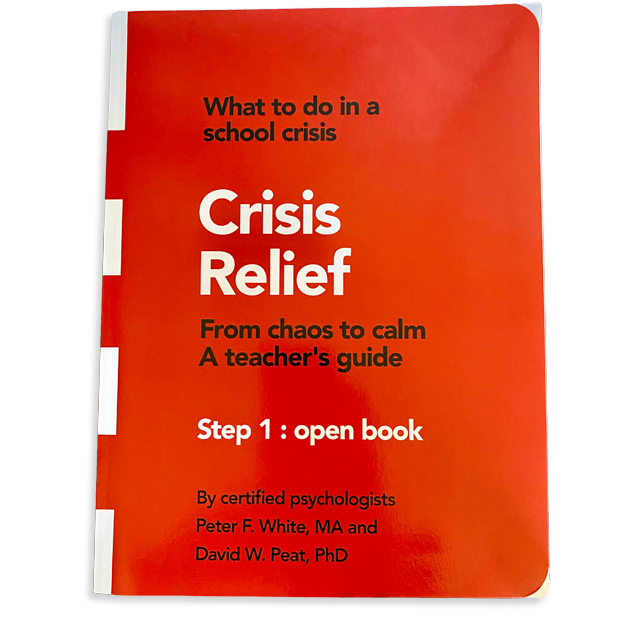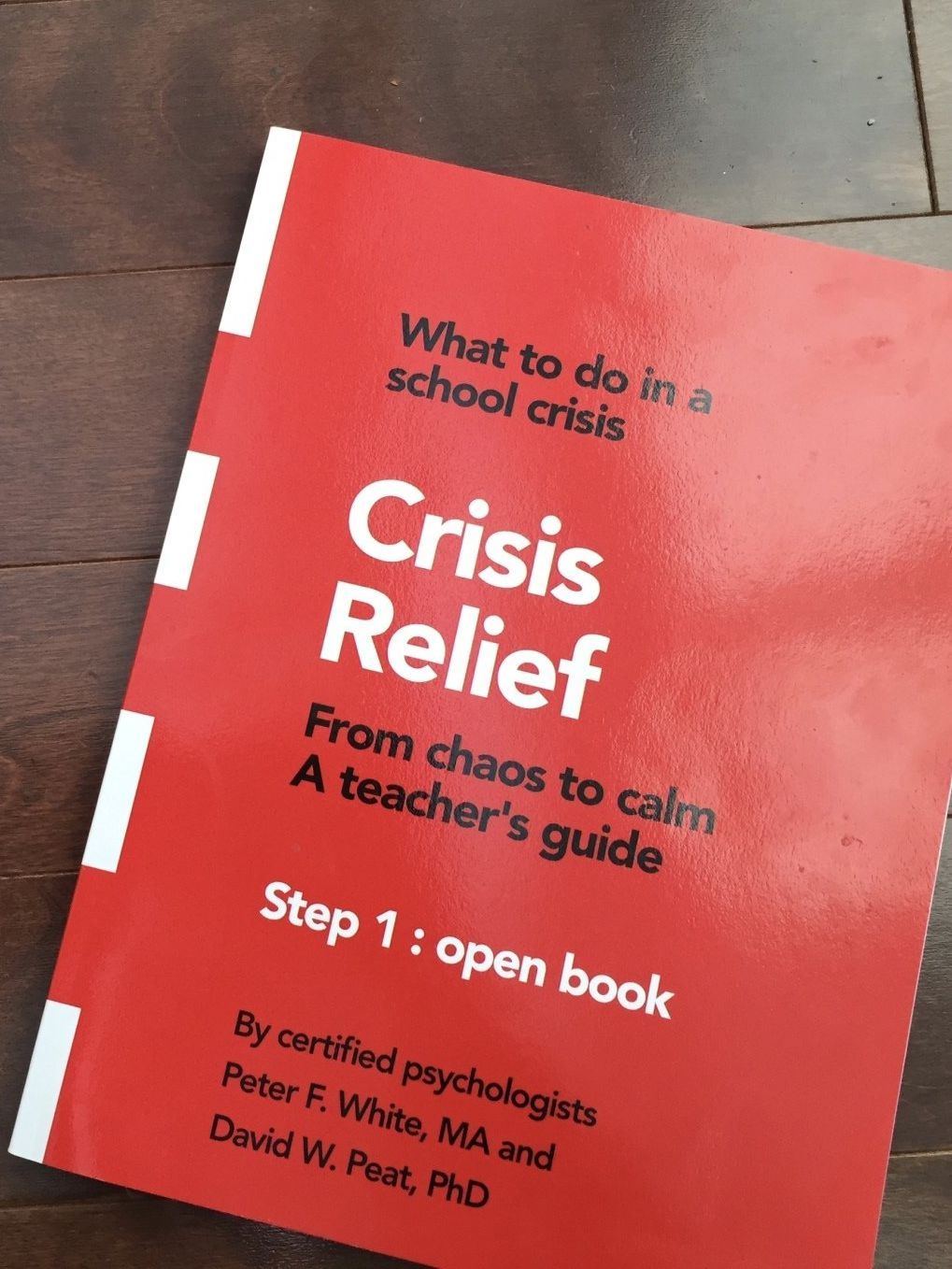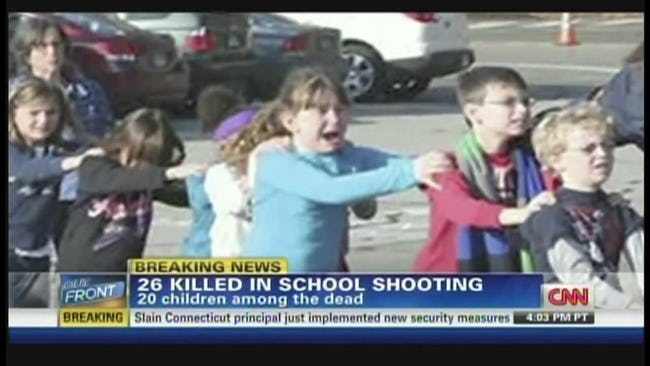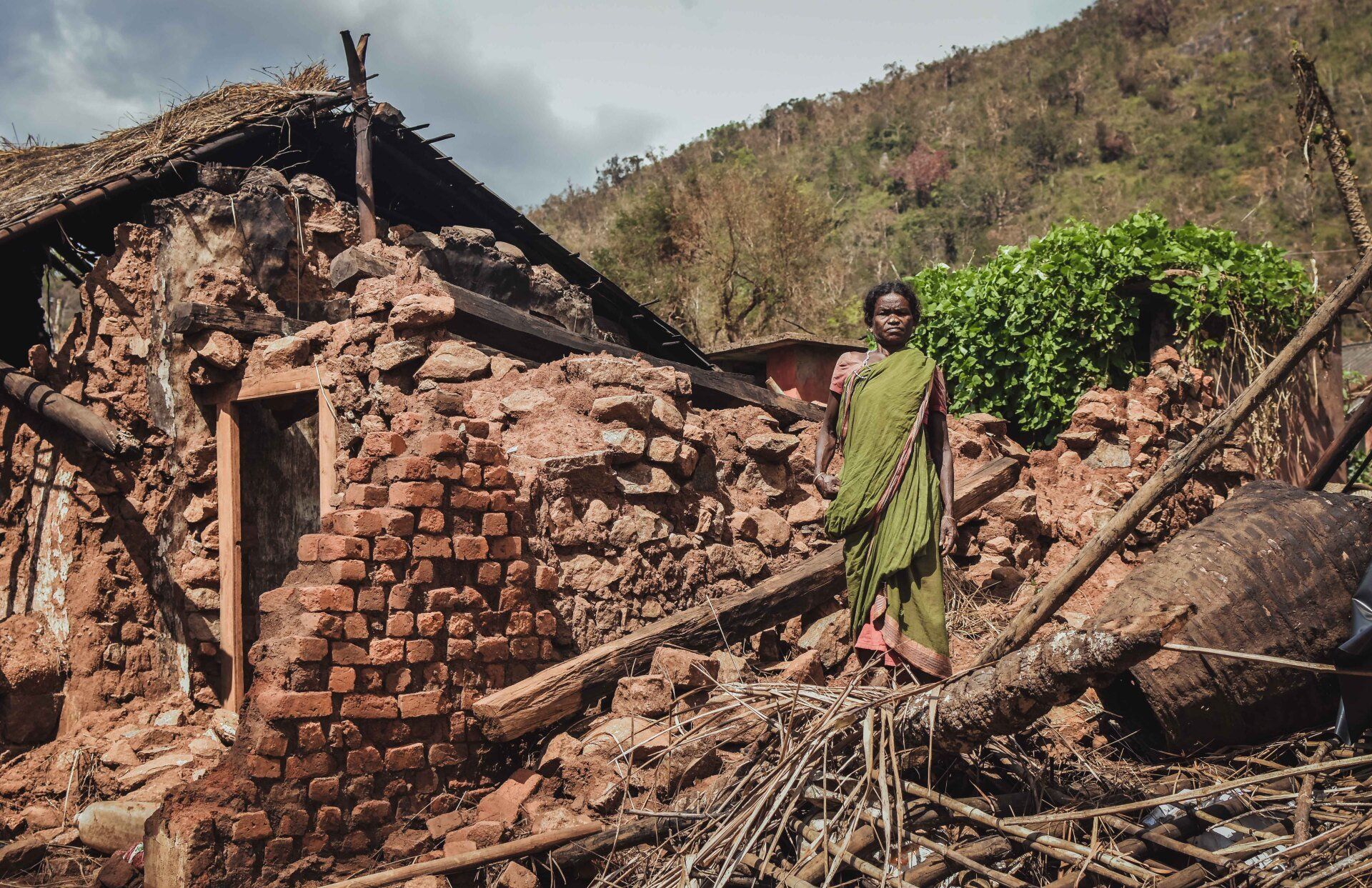POWER TO CHANGE
Don't be caught off-guard.
Crisis Relief
by Peter White, MA & David Peat, PhD.
The Authors
Peter White, MA & David Peat, PhD.
A long history of international experience in crisis intervention planning and training.
The authors, White and Peat, are certified psychologists. Their long-time collaborative experience encompasses assessment, research design, measurement, program evaluation, coping with grief, loss and behavioural issues, teacher workshops, and educational, medical, and community-based plans and interventions. They understand the needs of students, parents, educators, schools, administration, the media and communities. Their work influences and directs outcomes in too many countries to mention here.
A must-read before the unthinkable happens in your school.
Crisis Relief is a guide for principals, teachers, and school employees. Get the tools to produce the best outcome for the worst possible scenarios.
Our schools are not immune to society's challenges. Violence, threats, suicide, sudden loss, a child's terminal illness, family crisis, or a large-scale disaster will happen.
BUY

It is overwhelming to be a teacher in today's crisis-riddled world. Teachers and school divisions must develop new skills and capacities to deliver the best learning experiences.
Produce the Best Outcome for the Worst Possible Scenarios
Contents
Includes easy-to-use, immediate response checklists and forms – practical guidelines for what needs to get done (when, where, why, how and by whom).

The Essential Response to Our Modern School Dilemmas
A few years ago, Dr. Peat and Peter White began noticing a disturbing trend when disasters would strike communities. Teachers and school leadership were ill-prepared to help students respond to the effects of a crisis no one could have imagined happening in their school. In response, they created an indispensable guide that includes easy-to-use, immediate response checklists and forms – practical guidelines for what needs to get done (when, where, why, how and by whom).






